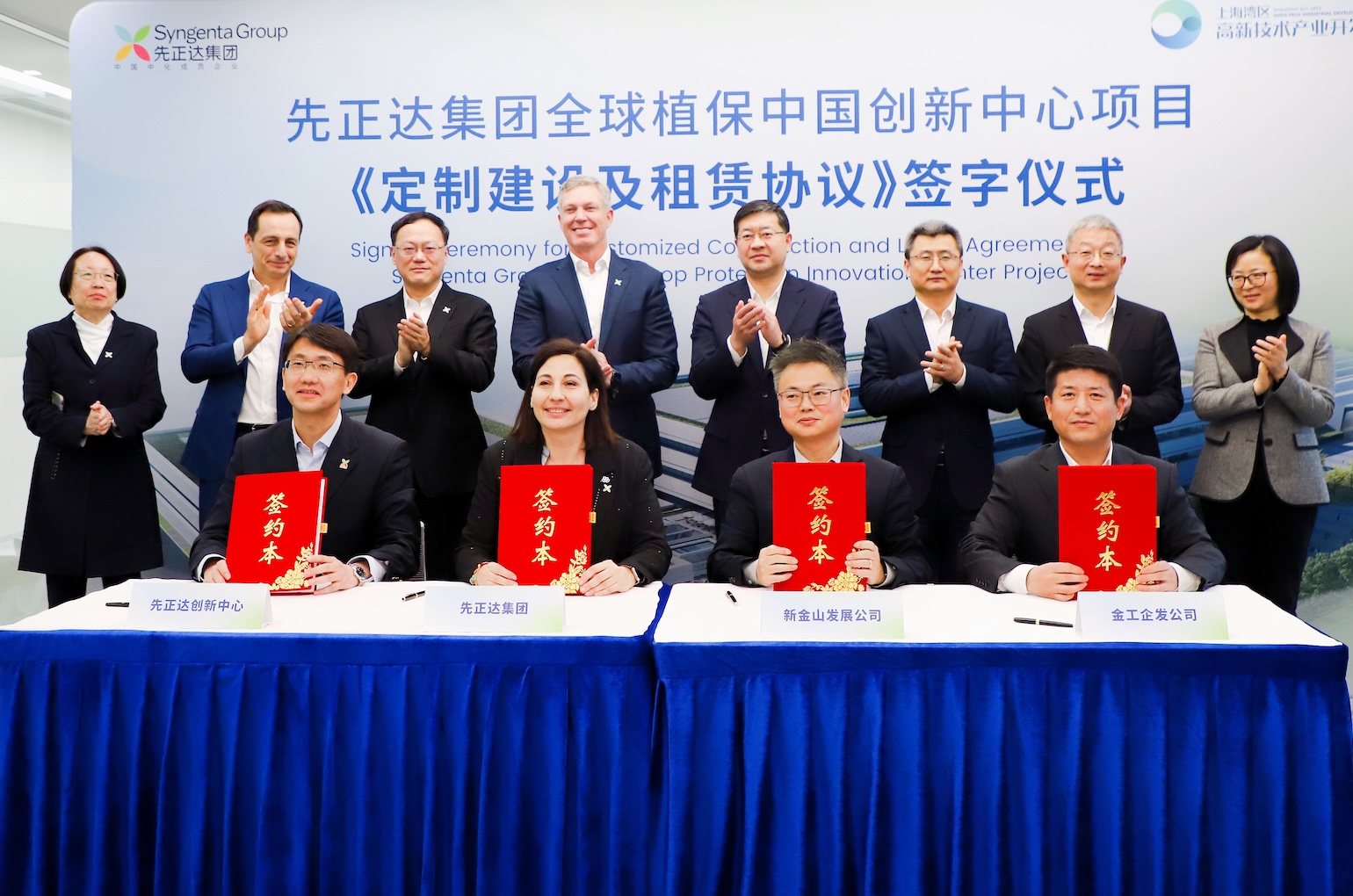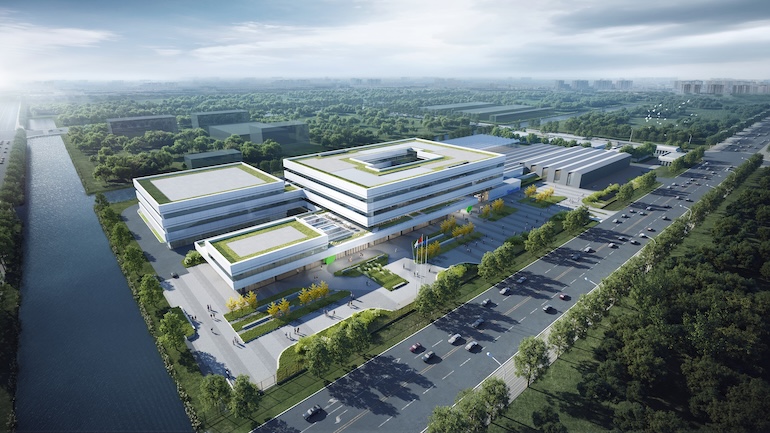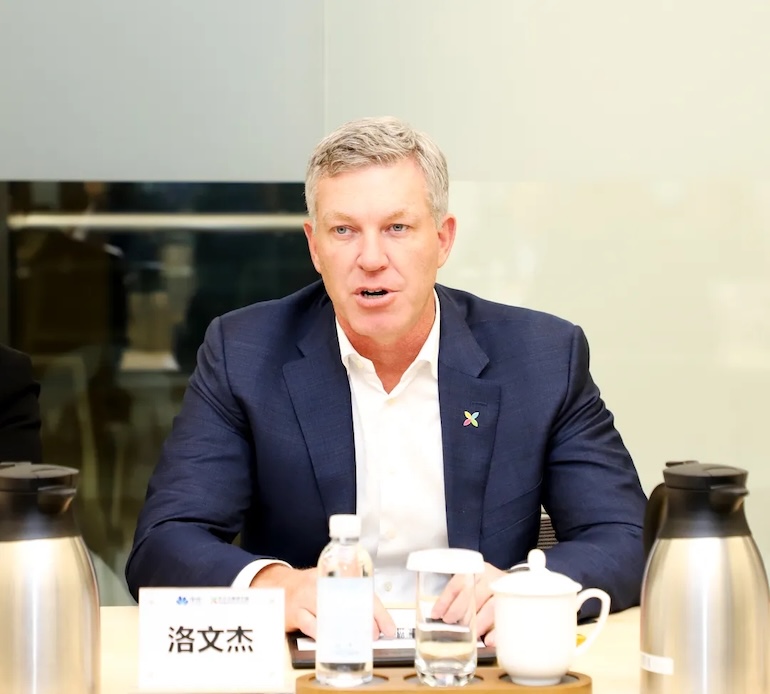 Syngenta to Base Third Global Crop Innovation Center in Shanghai
Syngenta to Base Third Global Crop Innovation Center in Shanghai(Yicai) Feb. 18 -- Syngenta Group has unveiled plans to set up its third global crop protection innovation hub in Shanghai, marking a major expansion of the agricultural tech giant’s research and development capabilities in China and globally.

The new facility, to be located in Shanghai's Jinshan district, will join existing centers in Stein, Switzerland and Jealott's Hill, United Kingdom, the Basel-based company announced yesterday.
The Shanghai center represents "the largest investment that we've made in R&D since the formation of Syngenta Group," Chief Executive Officer Jeff Rowe said in an interview with Yicai.
The group was formed in 2020, when Syngenta, Adama, and Sinochem Holdings’ agricultural business were merged.
Syngenta signed a framework strategic cooperation agreement with the Jinshan district authorities yesterday, while its parent company Sinochem Holdings inked a deal with the city government.
The new center will focus on developing crop protection products, formulation technologies, and integrated pest management solutions. Its research will span novel chemicals, biologicals, soil health, and sustainable chemistry, with a particular emphasis on rice innovation.
China is the world’s biggest producer and consumer of rice. As a staple food crop, the starchy grain is the bedrock of the country’s food security. Innovations in rice farming are critical to ensuring supplies.

“China is a very important market for us,” Rowe said. “It’s one of the biggest markets for crop protection in the world. It's also one of the fastest-growing markets.
“The fact that there is a very strong ecosystem of innovation in China makes it a really good match for us, as we add this third innovation center to our global network,” he added.
An Open and Global Platform
The Shanghai center will have research laboratories, scientific greenhouses, and climate-controlled chambers, with the first phase scheduled to begin operations in 2028. The aim is for the facility, which will eventually host about 300 researchers from China and abroad, is to function as an open innovation platform in collaboration with Chinese universities, research institutions, and industry partners.
Rowe emphasized the new center's role in Syngenta's global operations. "We've got a lot of confidence that we'll be able to quickly incorporate the Shanghai Innovation Center into the network we have globally," he said.
“It links in very, very collaboratively with our existing footprint,” he said, noting the importance of data exchange and personnel movements between centers.
Rowe also pointed out that the ability to enhance the rice expertise that Syngenta has now will benefit both the Chinese and global markets.
AI-Powered Agriculture
Discussing artificial intelligence's impact on agriculture, Rowe revealed that Syngenta extensively uses machine learning models in research projects for most of its crop protection products. The Shanghai center will embed AI and digital technologies throughout its operations.
“You link that with the artificial intelligence advancements in terms of large language models, the ability then to connect the models with the practical expertise and the local footprint creates a really powerful combination,” Rowe pointed out.
Farmers are cautious when it comes to technology, Rowe said, but once they see the value in technological innovation, they are actually quite quick to adopt it. “Farmers have shown an absolute willingness to embrace technology,” said Rowe, who also farms in Illinois, United States.
Rowe, a fifth-generation farmer, also drew attention to the importance of access for small farmers to digital tools, such as satellite imagery, drones, and soil probes to capture more data, especially in China. “Typically it's harder for them to get access to the best information,” Rowe said, adding that these advances enable Syngenta “to be able to scale to those farmers in a much more efficient way. ”
Syngenta's Modern Agriculture Platform, or MAP centers, in China exemplifies this digital transformation. The company has committed to expanding these agricultural service centers to 1,000 by 2028, aiming to increase the income of the farmers served by 8 percent compared with non-served farmers.
Navigating the Challenges
“It’s been a difficult couple of years for agriculture,” Rowe acknowledged, citing falling commodity prices and extreme weather conditions. “It was already a hard job. It’s even harder now.
“But to me, innovation plays a critical role,” he said. “The ability to bring innovation to farmers faster and in a more efficient way is essential because the challenges are not going to get easier. It’s going to get more difficult. And companies like Syngenta have an important role to play.”
On the geopolitical challenges, Rowe said it is important to note that the world is changing. But Syngenta does not take political positions, he said, adding that “we believe very strongly that food security is a human right, that everyone deserves to have enough food. And we think that Syngenta Group has an important role to play.
“We also think that Syngenta Group can serve as a bridge between the US and China, as well as other countries,” he said. Against the backdrop of the world’s every-growing food needs and climate change, Syngenta’s “role is to be an innovation provider and to serve farmers around the world, no matter where they are, what market they’re in, or what political situation they’re facing.
“It’s why continuing to innovate and bringing new centers like the Shanghai Innovation Center is really important,” Rowe said. “It’s crucial for the future of farming.”
Rowe concluded by saying that his “goal is to continue to improve the financial performance of the company, to continue to bring more great innovations to farmers, and hopefully have a safe and productive season for the company and for my farm as well.”
Editor: Tom Litting